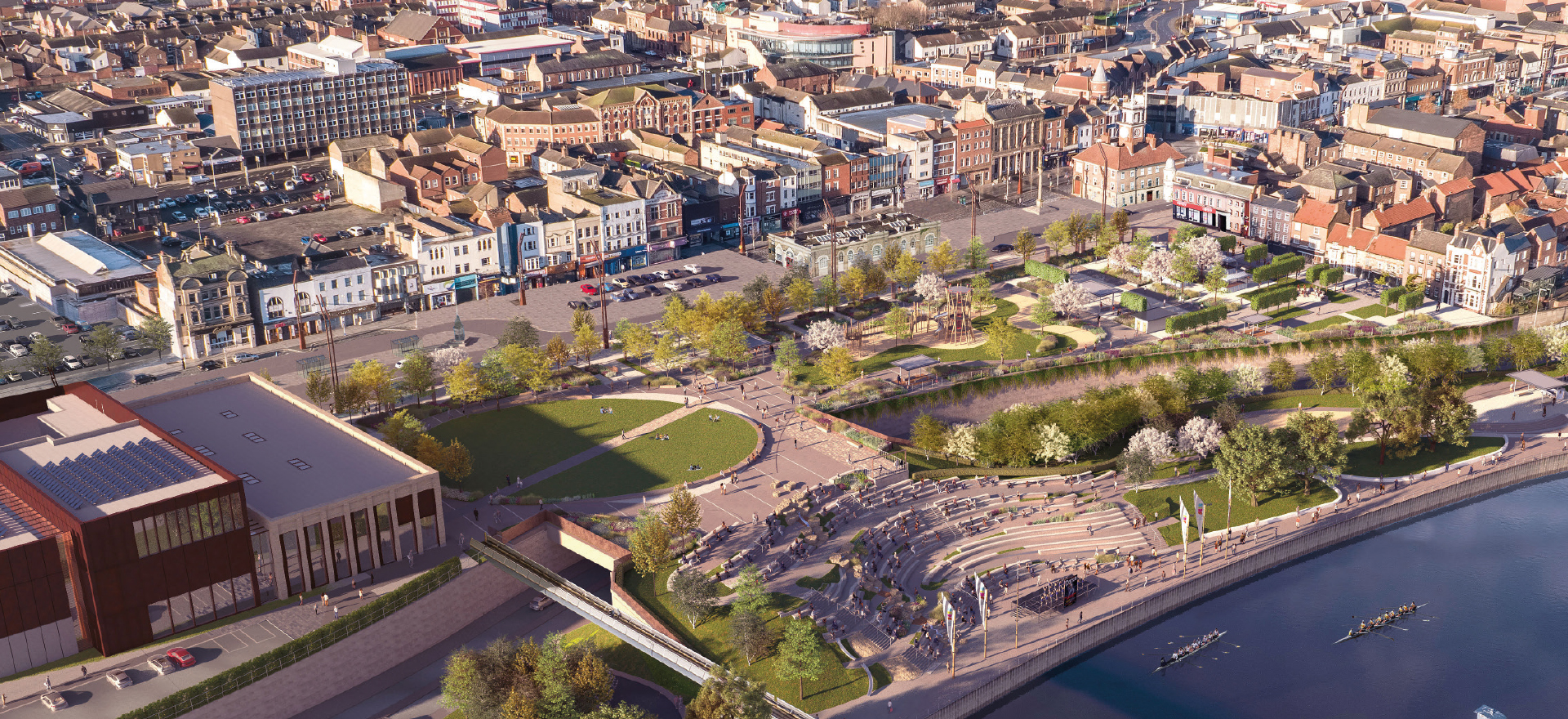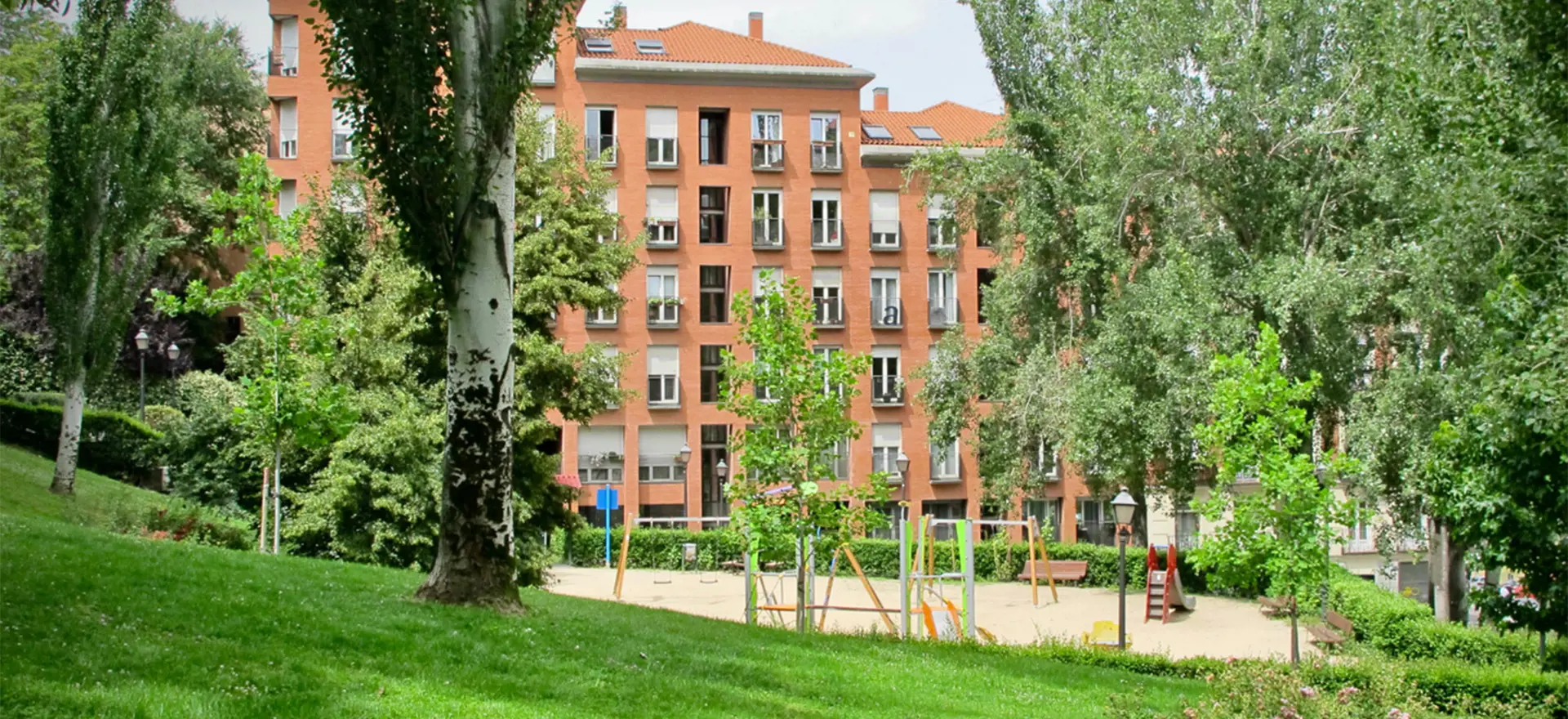This is the third in Lichfields’ blog series on town and city centre living. It looks at the environmental factors to be considered and addressed when promoting strategies based around the growth of residential populations in our centres.
In our last blog
Ryan Barrett and
Jennifer Heron looked at the demographic groups who are choosing to live in town and city centres, identifying that demand is already strong among younger age groups, and there is obvious potential for the market for city centre living to grow among older generations.
There is, however, more limited evidence of interest in city centre living among those with families – and while research in this area is quite limited, it appears that environmental factors, and concerns about what it would be like to live in town and city centres might be acting as a barrier to success in town and city centre living strategies.
The reasons why young people like to live in central areas are well known – and range from high levels of public transport accessibility and enjoying the ‘buzz’ of city centre life, through to easy access to employment, shopping, leisure and cultural facilities. But those with families and older generations have different priorities - and are often more sensitive to the environment around them, whether that be the noise environment, air quality, access to green space, access to healthcare or even real and/or perceived levels of crime.
Noise and Air Quality
Without doubt, urban centres experience higher levels of noise and air pollution than suburban and more rural locations – and this is, in large part, attributable to transportation networks (railways, roads and in larger cities/conurbations, air traffic). In this context, it is clearly important for city centre residential accommodation to be designed in a way which ‘designs out’, or at least minimises the impact of noise and air pollution upon daily life e.g. through the development of higher levels of greenspace in close proximity to residential areas, which recent research
[1] confirms results in lower day-evening-night noise levels.
This is particularly important given that there is now much greater awareness of these issues than has been the case in the past and exposure to noise is now rightly recognised as a risk factor related to both physical and mental health. This is, in part at least, due to the lived experience of many people during the Covid-19 pandemic, when lockdown restrictions resulted in huge drops in noise and air pollution
[2].
Access to Greenspace
The World Health Organisation states that
“urban green space is a necessary component for delivering healthy, sustainable, and liveable cities. Urban green space interventions can deliver positive health, social and environmental outcomes…There are very few, if any, other public health interventions that can achieve all of this”[3].Of course, green spaces also offer other benefits – and can help address flood risk, mitigate climate change and improve biodiversity. New green spaces for people to enjoy also benefit social and community life by providing additional places to meet and relax
[4].
However, an analysis carried out by the environmental charity ‘Keep Britain Tidy’ has revealed that 70% of people who live in UK towns and cities do not have access to good quality greenspace, which rises to 75.8% in the most deprived areas30.
Poor access to greenspace, and indeed amenity / play space, is a particular issue in UK town and city centres – much more so than in many other parts of Europe – and a clear challenge for local authorities wishing to promote town and city centre living – though many authorities recognise this and are actively looking for opportunities to address this issue e.g. through the promotion of ‘pocket parks’. Indeed, although of a different scale, Lichfields has been pleased, over recent years, to support
Stockton Borough Council in its promotion of a new Urban Park in the heart of Stockton Town Centre. This scheme, on the site of a former shopping centre, will create new green space within the town centre, including new play equipment and other recreational spaces, and support other initiatives aimed at diversifying the mix of uses, including new residential development, within and around the centre.
[5] Image credit: Ryder Architecture
Image credit: Ryder Architecture
Crime
Crime – or the perceived risk of crime of crime / threat to personal safety / security - is another environmental factor which influences public attitudes towards living in town centres, and from Lichfields’ wider experience working across town centres around the UK, we know that many people share concerns that incidence of public disorder and anti-social behaviour are much higher in town centres – and this contributes to a sense that town centres are not a safe place to live.
However, on the basis of recent analysis of UK Crime Statistics (April 2022) undertaken by Lichfields as part of an analysis of a range of large town and city centres across the North East and Yorkshire region, these concerns are not necessarily reflected in the available data on reported crime. Our analysis of 5 different centres identified that in broad terms, levels of reported crimes are very similar across both town centres and the wider local authority areas they form part of.
Levels of crime were essentially the same in town centres as elsewhere. More specifically:
-
Public Disorder: marginally higher (around 3%) in town centres than wider local authority areas;
-
Criminal Damage and Arson: marginally lower (around 3%) in town centres than wider local authority areas; and
-
Anti-social Behaviour: marginally lower (around 2%) in town centres than wider local authority areas.
Access to Health and Education Facilities
Those who don’t currently live within town or city centres often have concerns that, if they were to live in a more central location, they would have reduced access to health and / or education facilities. However, such concerns are not necessarily borne out in reality.
In terms of the population as a whole, 94% of people residing in urban centres areas live within a 20-minute walk of a General Practice (GP). This compares with rural areas, where just 19% of people live within a 20-minute walk of a GP surgery
[6].
In relation to access to educational facilities, colleges and universities are often located in urban centres, while the high levels of public transport accessibility in town and city centres mean that, certainly, in terms of secondary education, schools are typically quite accessible. Access to primary education can be more problematic as few primary schools are located in centres – but generally educational facilities are accessible from town and city centres – and more accessible than rural areas.
City Centre Living in Practice
Many larger urban authorities in the UK have started to develop strategies aimed at promoting city centre living in recent years – and while each local authority takes a slightly different approach, they all generally highlight the importance of the wider environment. Glasgow City Council first developed its City Centre Living Strategy in 2014 and the strategy was updated in 2020 to see the city through to 2035 with an aim to double the population living in the city centre. The Glasgow approach seeks to identify different character areas within the different parts of the city, and then set out specific recommendations on the approach to be taken to promote residential development / communities in each area – ranging from dealing with vacant commercial floorspace to wider place-making and environmental improvement strategies.
Smaller towns are also getting in on the act. Stockport Metropolitan Borough Council launched its Development Framework for Town Centre Living in 2018 and provides a clear understanding of what needs to change in order to create the right conditions to promote residential development in the town centre and it clearly identifies the need for improved access to amenity space / greenspace to support town centre living, whilst also highlighting that this can have implications for development viability.
Challenges and Opportunities
It’s clear therefore that environmental conditions are important in shaping people’s views on living in town and city centres – and consideration of the wider environment is key when developing residential uses in central areas and strategies aimed at promoting town / city centre living.
Factors such as noise, air quality and access to greenspace are all significant challenges but are all issues that can be addressed through good planning and design. In other respects, town and city centre environments offer distinct advantages – not least by being well connected and offering convenient access to health and education facilities, as well as shops, services, arts and cultural events – and can often support a high quality of life. Furthermore, at least at a statistical level, crime is no more of an issue in town and city centres than elsewhere – though public perception of crime is probably still an underlying concern for some.
Our experience at Lichfields over recent years is that where the environment is right – or at least there is a plan in place to create an environment where people want to live – there is commercial interest from the development sector in promoting city centre living. Our challenge as planners – both through development management and plan preparation is to make the most of this opportunity by creating environments where people choose to live.
In our next and final blog in this series – to be published next week -
Isaac Vango will explore the economic benefits that town and city centre living can unlock.
[1] https://www.centreforlondon.org/blog/noise-pollution-why-it-matters
[2] https://www.centreforcities.org/reader/city-centres-past-present-and-future-their-evolving-role-in-the-national-economy/the-performance-of-city-centres/
[3] https://greenflagaward.org/news/environment-charity-reveals-green-space-gap-as-northsouth-divide-identified/
[4] https://www.planningyourworld.org.uk/what-can-planners-change/access-to-green-spaces/
[5] https://lichfields.uk/content/products/revitalise
[6] https://sma.org/the-uk-national-health-service/





 Image credit: Ryder Architecture
Image credit: Ryder Architecture